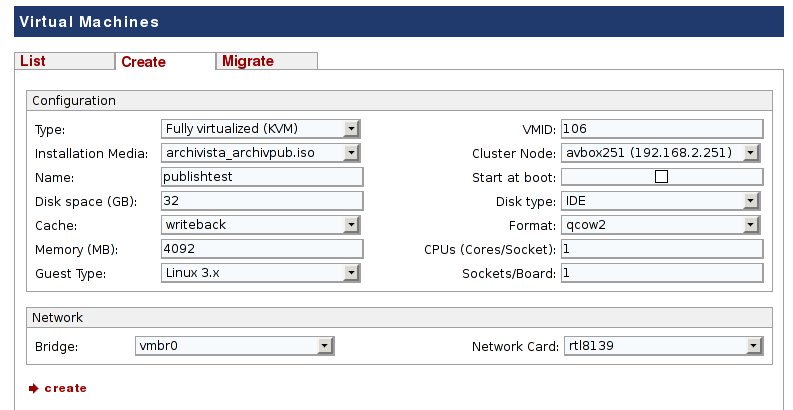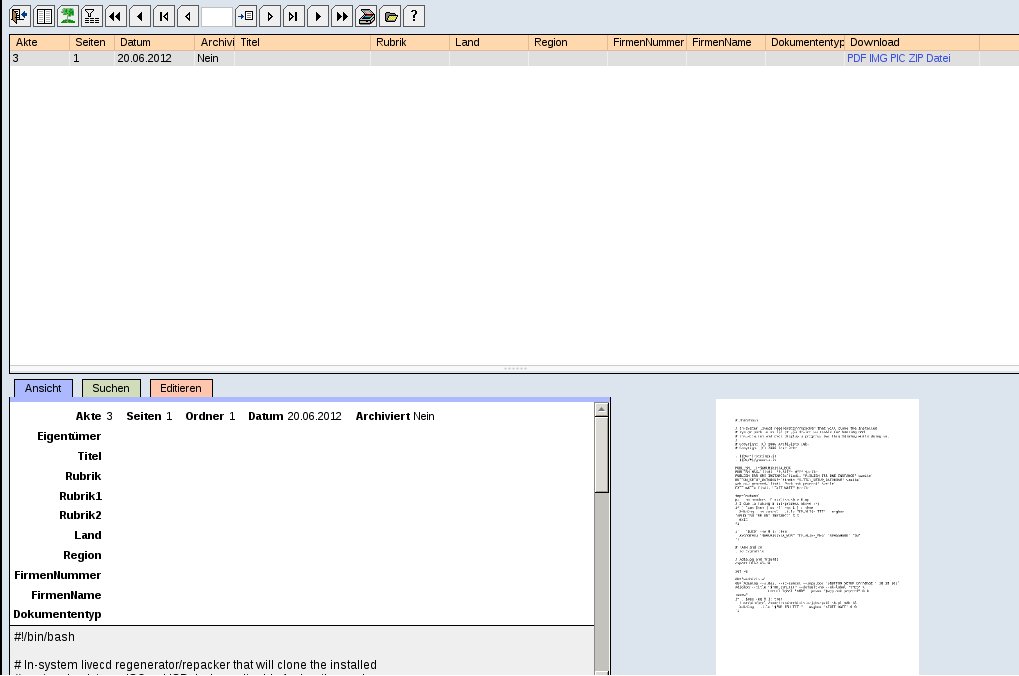29.6.6 Testing the published ArchivistaVM archive
Now go to ArchivistaVM (it is included with every ArchivistaBox). Just as a quick reminder, log out of WebDMS, then click on "Home" and login to ArchivistaVM using "root" and your root password.

The published CD can now be tested in virtualized form. To do this, create a virtualized instance in ArchivistaVM. The CD created with the name archivista_archivpub.iso (or the name used previously) must be selected under 'Data carrier for installation'. A minimum of 4 GB of memory must also be allocated for RAM mode. Strictly speaking, this is 2 GB for RAM mode plus/minus the size of the ISO file created.
Important: if the ISO file does not exist, you must check "view system files" in WebConfig to see why the ISO file has not (yet) been created. In our example, it takes 20 to 30 seconds to create the ISO file. In the case of larger archives, this should not exceed 1 to 2 minutes.
Once the virtualised instance has been created, the CD can be started. The published ArchivistaBox created starts directly with 'ram ramonly', i.e. the ArchivistaBox will be started and set up in RAM.

Please note: if the published archive cannot be started in RAM mode, a normal installation can be performed on the first screen using the "linux" option.
The ISO file created can then be burned to a CD/DVD. If you want to do this directly from the ArchivistaBox, a terminal window must first be opened on the ArchivistaBox desktop (ALT-F7). Subsequently, use the "su" command to change to the root user. The command "cdrecord -scanbus" can be used to search for a burner. Next, burn the CD/DVD.
cd /var/lib/vz/template/iso cdrecord archivista_archivpub.iso dev=1,0,0 speed=4 -v
It is important to specify the correct device number. The number found with "cdrecord -scanbus" (e.g. dev=7,0,0) should be entered instead of dev=1,0,0.
Conclusion: with ArchivistaDMS, self-supporting archives can be created within minutes directly in WebDMS and tested in a virtualised environment directly on the same machine. The above example can be run through in the RAM, if you have 4 GB (or better, 8 GB) RAM available.